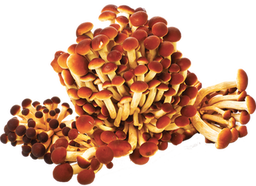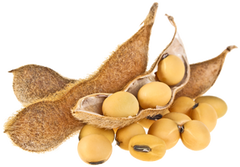Panel discussion on...
Alternative proteins
Strategizing for success
in a complex regulatory environment
With population growing globally, the demand on finite resources is ever increasing - and protein is no exception. Traditional sources of protein, such as animal and plant, have a significant environmental footprint and are associated with other issues relating to climate change and supply chain disruptions. That’s why alternative methods to increase or optimize resources are critical.
One such area of development is cultivated meats, which is the process of collecting and growing animal cells in bioreactors and feeding growth medium to support cell differentiation and replication. This solution presents multiple advantages including negating animal welfare issues, lower risk of zoonotic disease outbreaks, significantly reduced land use, and greater efficiencies of converting water and feed into muscle tissue. However, the cost of this technology - relative to that of conventional meat products - remains a challenge. Other issues include the highly complex technology which is novel to the food industry (more akin to pharmaceutical applications) – including the establishment of a stable cell line and issues with cell procurement and immortalization techniques, and as well as more practical challenges such as the availability of bioreactors. In addition, the requirement for bioactive proteins to sustain growth and differentiation reduces the efficiency versus microbial and plant-based proteins.
To this end, proteins produced using precision fermentation offer an alternative approach with a higher efficiency – critically, most microorganisms can harness inorganic sources of nitrogen to make microbial proteins. Furthermore, microorganisms can be genetically engineered to produce animal proteins that offer efficiency advantages over the conventional counterparts. Resource efficiency depends on how organisms acquire nitrogen and carbon, a challenge facing both fermentation and cultivated meat proteins. Microorganisms can metabolise a wider array of hydrocarbons than just simple sugars and opens opportunities to reuse waste streams.
In addition to the technological issues detailed above, one of the biggest challenges facing the commercialisation of these products is the regulatory pathway. The regulatory framework governing these protein sources varies by region and dictates the approach required to support safety. This element of market entry can often be overlooked in the early stages of R&D - however having a clear picture of the regulatory landscape and path to market is critical for setting a product launch for success. Some of the key considerations are:
- What is the regulatory route to market?
This will be impacted by factors such as:
- the presentation and function in food (e.g., an ingredient with colouring properties will be regulated via a separate regulatory pathway in the European Union [EU] and United States [U.S.] to a nutrient source); and
- the production processing steps (e.g., the use of genetic modifications may require a separate regulatory pathway).
- What testing strategy can be used to demonstrate safety?
Developing a robust safety argument is one of the fundamental points to obtaining regulatory clearance. Conducting toxicological studies can present multiple challenges such as cost and timing, difficulty in leveraging a sufficient margin of safety (versus the amounts to be added to foods) and potential conflicts with labelling (e.g., vegan). However, the potential to utilize alternatives to these traditional testing strategies depend on the factors such as:
- source material and whether there is historical consumption data that can be leveraged.
- compositional equivalence to the conventional comparator.
- availability of animal toxicology studies on a related material.
- potential to utilize bioinformatics safety assessments to examine antimicrobial resistance, pathogenicity, toxigenicity of the material.
- What is the regulatory status and safety considerations of the inputs?
The regulatory status of inputs for the production process will vary by region – for example processing aids in the EU do not require authorisation, however specific criteria must be met to avoid this additional regulatory burden. Considering each of the inputs carefully, including their fate in the production process will be critical to the overall safety and regulatory status.
- What approaches can support the absence of allergenicity?
De novo proteins by their nature have the potential to indue allergenic reactions. A comprehensive approach must be taken to address this element of the risk assessment for a newly developed protein, considering methods such as predictive in vivo models of allergenicity, in silico bioinformatics evaluations, as well as in vitro assays of the material, to demonstrate that the final product does not present a concern to the consumer. It can be anticipated that specific labelling requirements may apply in many regions.
Understanding the answers to these, and similar, questions can guide the initial R&D work, as well as regions to focus on for short- and long-term marketing. This is particularly important for cell culture products – whereby the regulatory status is more ambiguous than other ingredients. The first approvals/no question opinions for these foods have now been granted in Singapore and the U.S. – and the proactive approach taken by regulators has meant that these regions are of particular interest. In the United Kingdom and EU, work has started on updating the regulatory framework, however these updates will take some time to come into force, and there are likely to be challenges on the way.
While these regulatory considerations present real challenges to companies seeking to bring their products to market - the scrutiny that these products undergo should provide confidence to consumers about the overall safety. Other considerations for the final customer experience will be the cost, as mentioned above, and naming of these products – various names have been considered for cultivated meat, including “cultured meat”, “clean meat” and “cell-cultured meat”. Ensuring there is agreement by industry will help to increase the recognition for these products.
In brief, this is a rapidly evolving and exciting area in the food industry which supports a critical global need – sustainable food sources. There are challenges ahead for pioneers in this space, and having a clear strategic view of the pathway ahead will be vital to ensuring long-term success.
Panelists
References and notes
- COMMISSION IMPLEMENTING REGULATION (EU) 2021/882; (EU) 2022/169; (EU) 2022/188; (EU) 2023/5; (EU) 2023/58; and (EU) 2021/1975
- https://doi.org/10.1016/j.foodchem.2019.126022
- https://doi.org/10.1016/j.cofs.2021.08.003
- https://doi.org/10.1016/j.tifs.2022.02.021
- doi: 10.3390/ijerph17072427
- https://doi.org/10.1016/j.appet.2021.105832
- https://library.wur.nl/WebQuery/wurpubs/fulltext/258042



















